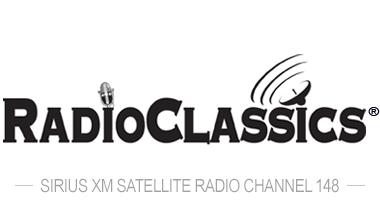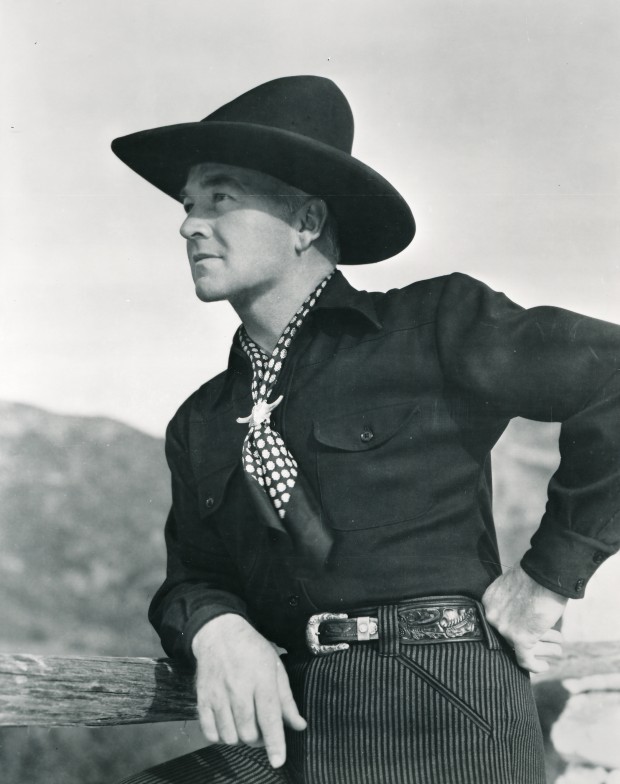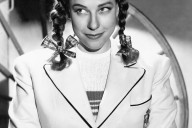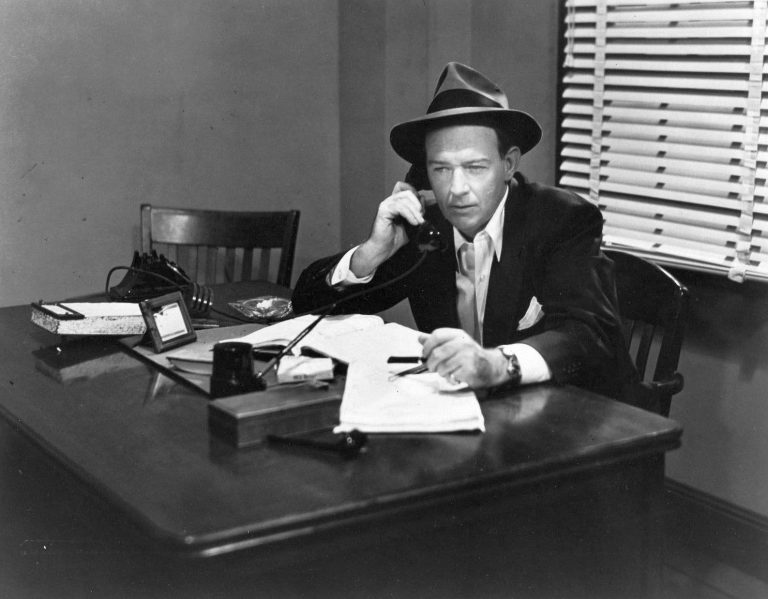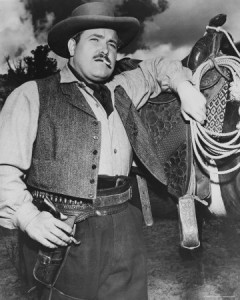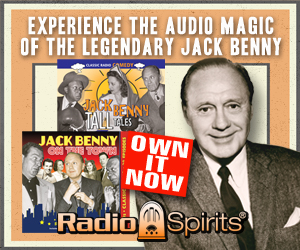By Ivan G. Shreve, Jr.
The man responsible for the motion picture career of actor William Lawrence Boyd—born in Hendrysburg, Ohio on this date in 1895—was without question Cecil B. DeMille. The famed director-producer cast the young hopeful in bit roles in many of his silent features: Why Change Your Wife? (1920), Forbidden Fruit (1921), The Affairs of Anatol (1921), etc. Boyd’s “breakout” role was in DeMille’s The Road to Yesterday (1925), and after that success, Bill was featured prominently in Cecil’s The Volga Boatman (1926), The Yankee Clipper (1927), and The King of Kings (1927).
Fittingly, William Boyd’s cinematic swan song was in a movie helmed by his old boss—1952’s The Greatest Show on Earth, which would win the Academy Award for Best Picture. In the film, Boyd portrayed the character that would bring him his greatest fame in movies, radio, TV, and practically every aspect of popular culture you can name: the one and only Hopalong Cassidy!
Though born in the Buckeye State, young Bill Boyd moved to Tulsa, Oklahoma at the age of seven. His parents, Charles and Lida, passed away while Bill was still in his teens, forcing him to relocate to California and take on a variety of occupations (including orange picker, surveyor, and auto salesman). Boyd enlisted in the U.S. Army during World War I but received an exemption due to his “weak heart.” Bill then made the trek to Tinsel Town and began to pay his dues as an extra in DeMille’s productions before landing larger roles in the director’s films.
While he was employed at Paramount, William Boyd also appeared in other films which not necessarily DeMille-related. Among his credited motion picture appearances were Brewster’s Millions (1921), Bobbed Hair (1922), Forty Winks (1925), Two Arabian Knights (1927—which won its director, Lewis Milestone, an Oscar for Best Comedy Feature), Skyscraper (1929), and Lady of the Pavements (1929). Though Boyd made the transition to “talkies” with efforts like The Painted Desert (1931) and Men of America (1932), he wasn’t enjoying the success that he had during the silent era when he pulled down $100,000 a year.
William Boyd’s contract with RKO came to an end due to an event that could have been the plot of a Hitchcock film. An actor named William “Stage” Boyd was arrested on gambling, liquor, and morals charges…but the newspaper story that told of “Stage’s” misfortune featured a picture of the other William Boyd. The paper apologized for its error the following day…but as Boyd himself told the story: “The damage was already done.” Boyd’s decision to change his billing from “William Boyd” to “Bill Boyd” didn’t help his career much, with acting jobs becoming harder and harder to come by.
The story goes that William Boyd was offered the minor role of “Red Connors” in a film entitled Hop-a-Long Cassidy (1935), which would bring the hard-drinking, rough-riding pulp magazine character created by Clarence E. Mulford to the silver screen. Boyd pressed upon producer Harry “Pop” Sherman to consider him for the lead, and when he won the role, the actor decided to clean “Hoppy” up and make him a paragon of virtue. He abstained from liquor and tobacco (sarsaparilla was his beverage of choice), didn’t swear (he spoke with flawless grammar), and rarely enjoyed the company of women. The success of Hop-a-Long Cassidy led to a follow-up in The Eagle’s Brood (1935), and then a most profitable series of B-Westerns produced by Sherman for Paramount (until 1941) and United Artists (until 1944). This made “Hopalong Cassidy” a member-in-good-standing of the Silver Screen Cowboy Trinity (the other members being Roy Rogers and Gene Autry, of course).
After 1936’s Go-Get-‘Em, Haines William Boyd played nobody on the silver screen but Hopalong Cassidy. The actor made a total of 54 westerns for Paramount and United Artists…and was certainly amenable to making more, but producer Sherman wanted to move on to more ambitious motion picture projects. Boyd decided to put on a producer’s hat in addition to a ten-gallon one and cranked out a dozen additional “Hoppies” between 1946 and 1948. By that point in his career, Bill had resigned himself to the fact that Hopalong Cassidy would be his movie legacy — so in 1948, he made a business decision that many probably thought insane at the time. He purchased the rights to his entire catalog from Harry Sherman (who believed the Hoppy series was all played out) for $350,000, mortgaging everything he owned (including his ranch) to do so.
William Boyd brought a print of one of his old Hoppy westerns to a local NBC TV station that year, offering them a nominal fee to show the movie (in the hopes that it would give him a little exposure). The reaction to the film was such that NBC requested more, and soon Boyd had leased his entire library to the network. The popularity of the movies thrust Boyd into the national limelight. He became a radio star with a series for the syndicated Commodore Productions that aired on both Mutual and CBS from 1950 to 1952. Then, after editing the twelve Cassidy films that he had produced himself to half-hour length for television, he created forty additional episodes that aired on TV between 1952 and 1954.
Hoppy merchandise was everywhere—watches, trash cans, trading cards, toy guns, cowboy outfits, records, and lunch boxes. In fact, Hoppy was the first character to be merchandised for the burgeoning lunchbox industry. (The Yuletide standard It’s Beginning to Look a Lot Like Christmas even features a lyric that refers to “a pair of Hopalong boots and a pistol that shoots.”) Fawcett and DC Comics published a series of Hopalong Cassidy comic books from 1946 to 1959, and a Hopalong Cassidy comic strip ran in newspapers from 1949 to 1955. Rather than disappoint those fans who remembered him as their favorite silver-haired cowboy hero (Boyd had gone prematurely grey about the time he arrived in Hollywood) — not wanting them to see his inevitable advancing years — Bill decided to retire. He became quite wealthy with real estate investments until his death in 1972.
Though I stated that William Boyd’s final live action feature film appearance was in The Greatest Show on Earth, Cecil B. DeMille had purportedly wanted Boyd to play the role of Moses in what would be DeMIlle’s cinematic curtain closer, The Ten Commandments (1956). The actor turned him down, believing that he was too well known as Hopalong Cassidy to be convincing…and truth be told, you can’t really think of Bill Boyd without thinking of the famous movie character. He once explained: “I’ve tried to make Hoppy a plain and simple man in manners and dress. Hoppy isn’t a flashy character. He isn’t illiterate. Nor is he smart-alecky. He doesn’t use big words or bad words. After all, I felt that Hoppy might be looked up to and that children might try to pattern their lives after the man. If Hoppy said ‘ain’t’ and ‘reckon’ and that-away’, all the kids might start saying the same things.” Are we excited about celebrating William Boyd’s birthday? You’re durn tootin’!
Copyright 2018 Ivan G. Shreve, Jr. and RSPT LLC. All rights reserved.
